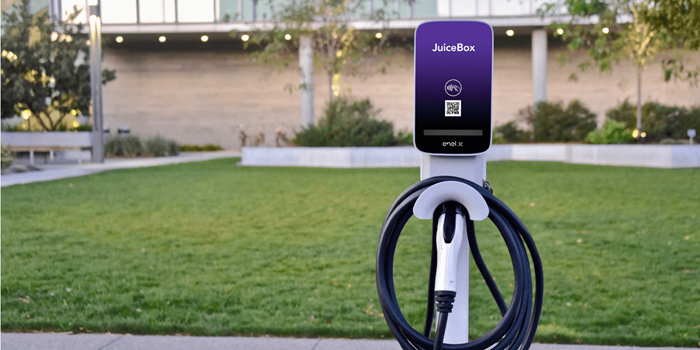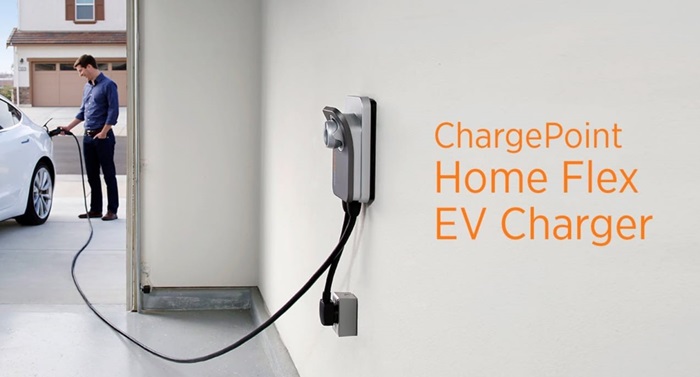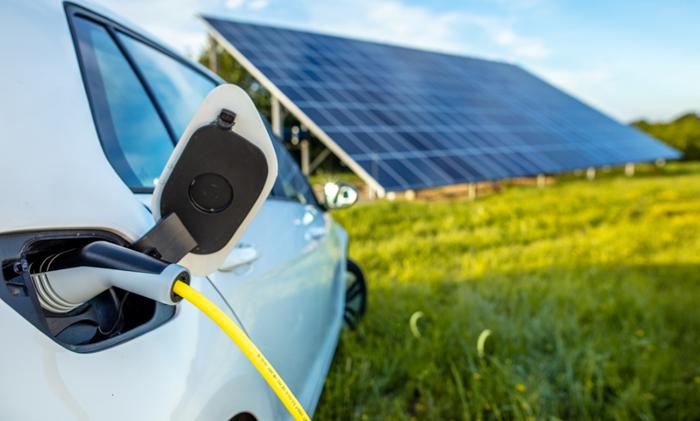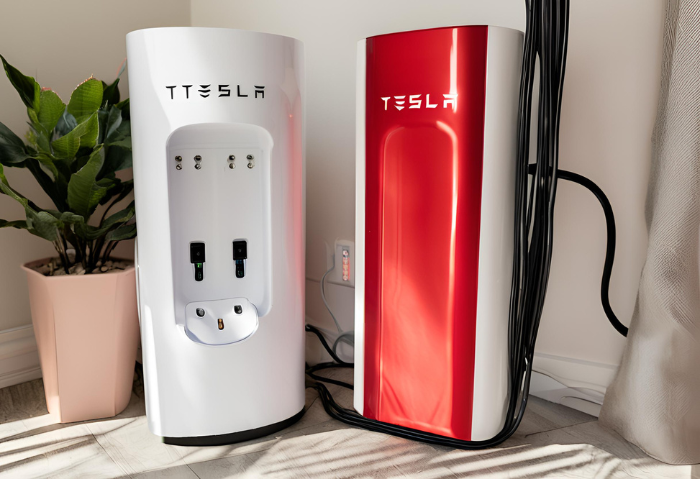Maximize Your EV Performance: Essential Tips for Home Charger Installation
Electric Vehicle (EV) charging is revolutionizing the automotive industry, offering numerous benefits for drivers and the environment alike. Understanding the diverse range of charging options, infrastructure development, and technological advancements is crucial in harnessing the full potential of EVs.
This guide provides an insightful overview of EV charging, covering its benefits, charger types, infrastructure, technological evolution, and environmental impact.
1. Overview of EV Charging
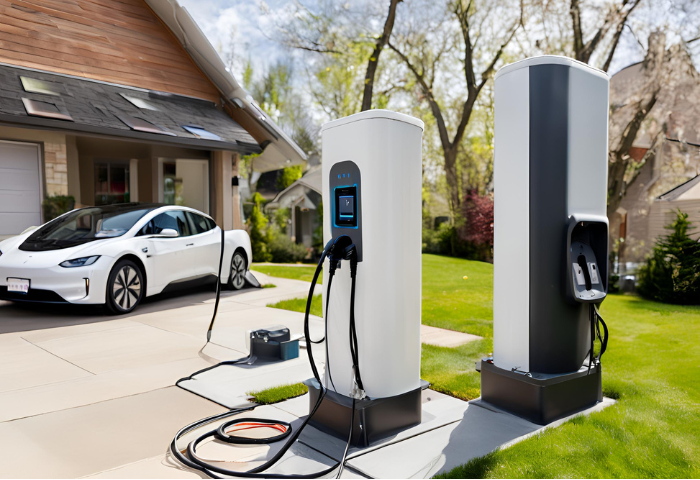
1.1 Benefits of EV Charging
Environmental Sustainability: EV charging reduces greenhouse gas emissions, mitigating air pollution and combating climate change.
Cost Savings: EV charging typically costs less than gasoline, resulting in long-term financial savings for drivers.
Energy independence: Renewable energy sources can power EVs, reducing reliance on fossil fuels and enhancing energy security.
Enhanced Driving Experience: Quiet operation, instant torque, and smooth acceleration are among the perks of driving electric vehicles.
1.2 Types of EV Chargers
Level 1 Chargers: These chargers utilize a standard 120-volt household outlet and provide a slow charging rate, suitable for overnight charging.
Level 2 Chargers: Operating at 240 volts, Level 2 chargers offer faster charging speeds, ideal for home installation and public charging stations.
DC Fast Chargers: Also known as Level 3 chargers, DC fast chargers provide rapid charging, delivering high-voltage DC power directly to the vehicle’s battery.
1.3 EV Charging Infrastructure
Home Charging: Residential EV owners often install Level 2 chargers at home for convenient overnight charging.
Public Charging Stations: Public charging networks are expanding globally, offering Level 2 and DC fast charging options in urban areas, highways, and commercial locations.
Workplace Charging: Many employers are installing charging stations to support employee EV adoption and promote sustainability.
1.4 Evolution of EV Charger Technology
Increased Charging Speeds: Advances in charger technology have significantly reduced charging times, enhancing convenience for EV drivers.
Bidirectional Charging: Some EV chargers now support bidirectional power flow, enabling energy transfer between the vehicle and the grid, potentially facilitating vehicle-to-grid (V2G) integration.
Smart Charging Solutions: Smart chargers incorporate connectivity features and algorithms to optimize charging schedules, reduce energy costs, and minimize grid impacts.
1.5 Environmental Impact of EV Charging
Lifecycle Emissions: While EV charging produces no tailpipe emissions, the environmental impact depends on the source of electricity generation.
Renewable Energy Integration: The widespread adoption of renewable energy sources can further reduce the carbon footprint of EV charging, enhancing its environmental benefits.
Battery Recycling: Efforts to develop efficient battery recycling technologies aim to minimize the environmental impact of EV battery production and disposal.
2. Installing EV Charging at Home
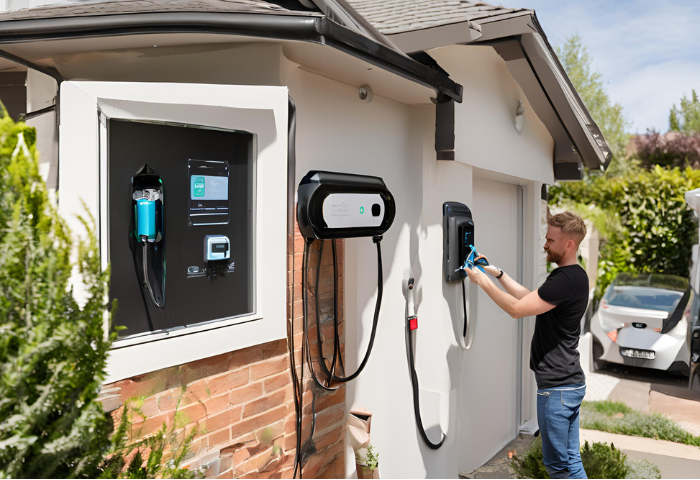
2.1 Types of Home EV Chargers
Level 1 Chargers: Basic chargers that utilize a standard 120-volt household outlet, providing a slow charging rate suitable for overnight charging.
Level 2 Chargers: More advanced chargers operating at 240 volts, offering faster charging speeds and compatibility with most EV models.
Smart Chargers: Advanced Level 2 chargers with connectivity features, allowing users to monitor and control charging remotely via smartphone apps.
2.2 Charging Capacity and Speed
Level 1 chargers typically deliver around 2-5 miles of range per hour of charging, while Level 2 chargers can provide 10-30 miles of range per hour, depending on the EV and charger specifications.
Smart chargers offer additional benefits such as scheduling charging sessions during off-peak hours to optimize energy costs.
2.3 Cost of Home EV Charging Installation
The cost of installing a Level 2 EV charger at home typically ranges from $500 to $2,000, depending on factors such as electrical system upgrades, charger brand, and installation complexity.
Additional costs may include permit fees, labor charges, and potential incentives or rebates offered by utility companies or government agencies to offset installation expenses.
2.4 Permitting and Regulations
Before installing an EV charger, homeowners must comply with local permitting requirements and building codes, which may vary depending on jurisdiction.
Permits may be required for electrical work, and installations must adhere to safety regulations to ensure proper wiring, grounding, and protection against electrical hazards.
2.5 DIY vs Professional Installation
DIY installation may be feasible for homeowners with electrical expertise and knowledge of local regulations, but it carries the risk of electrical hazards and may void warranties if not done correctly.
Professional installation by licensed electricians ensures compliance with safety standards, proper equipment installation, and adherence to permitting requirements, providing peace of mind for homeowners.
3. Electrical Requirements
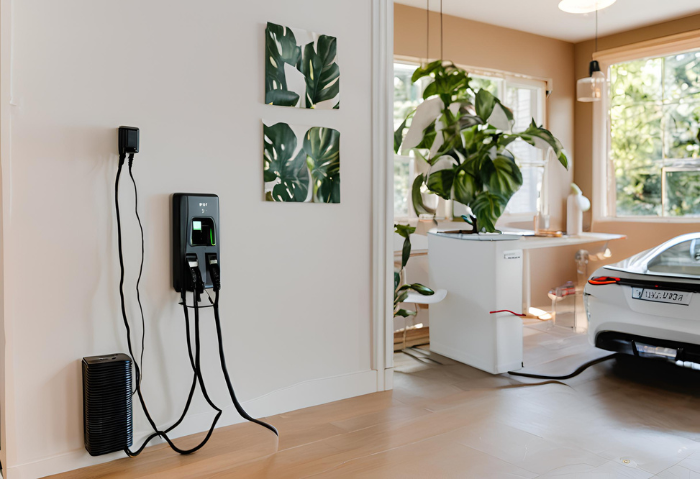
3.1 Understanding Voltage Levels
Voltage refers to the electrical pressure that powers EV chargers. Residential chargers primarily operate at 120 volts (Level 1) or 240 volts (Level 2), determining charging speed.
Level 1 chargers utilize standard household outlets, while Level 2 chargers require dedicated 240-volt circuits for faster charging.
3.2 Amperage and Circuit Breaker Requirements
Amperage (or current) determines the flow of electricity. Level 1 chargers typically draw 8-12 amps, whereas Level 2 chargers may require 16-80 amps, depending on charging capacity.
Circuit breakers protect electrical circuits from overloading and overheating. Level 1 chargers usually require 15-20-amp circuits, while Level 2 chargers necessitate 30-100-amp circuits, depending on charger specifications.
3.3 Electrical Panel Upgrades
Upgrading the electrical panel may be necessary to accommodate higher amperage circuits for Level 2 chargers.
Consultation with a licensed electrician is essential to assess panel capacity, install new breakers, and ensure compatibility with EV charging requirements.
3.4 Grounding and Wiring
Proper grounding is critical to electrical safety, providing a path for fault currents to safely dissipate into the ground.
Wiring for EV chargers must be sized appropriately to handle the load and comply with local electrical codes and regulations.
3.5 Safety Considerations
Installation of EV charging equipment should be performed by licensed electricians familiar with EV-specific requirements and safety protocols.
Regular maintenance and inspection of electrical components, including breakers, wiring, and grounding systems, are essential to prevent accidents and ensure reliable charging operations.
Homeowners should exercise caution when handling electrical systems and avoid DIY installations unless adequately trained and knowledgeable in electrical work.
4. Location and Placement
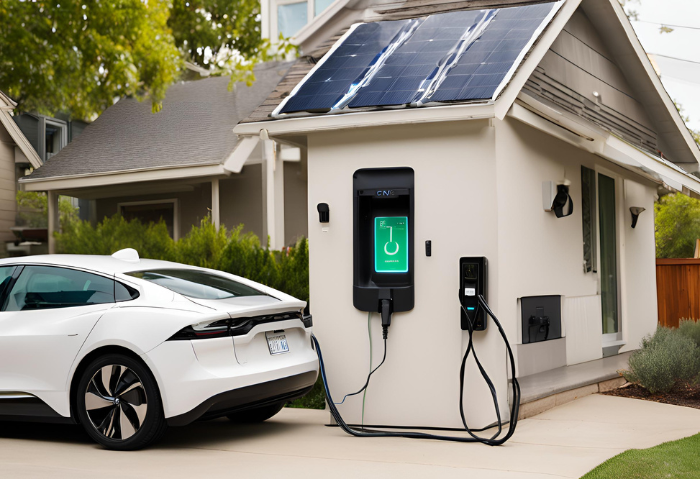
4.1 Choosing the Right Location
Identify a location near the EV parking spot with sufficient space for the charger and easy access to the vehicle.
Consider proximity to the electrical panel to minimize wiring distance and installation costs.
Ensure adequate ventilation to dissipate heat generated during charging and prevent potential overheating issues.
4.2 Indoor vs Outdoor Installation
Indoor installation offers protection from harsh weather conditions, vandalism, and theft, making it suitable for garages or carports.
Outdoor installation provides convenience for curbside parking or driveway charging, eliminating the need for long charging cables and potential indoor clutter.
4.3 Mounting Options for EV Chargers
Wall-mounted chargers are common for both indoor and outdoor installations, offering space-saving solutions and easy access for plugging and unplugging.
Pedestal-mounted chargers are ideal for outdoor locations where wall mounting is impractical, providing a freestanding option with integrated cable management.
4.4 Cable Management
Incorporate cable management solutions such as cable hooks, retractable reels, or cable covers to prevent tripping hazards and maintain a tidy appearance.
Choose charging cables of appropriate length to reach the vehicle without excess slack or tension, ensuring ease of use and minimizing wear and tear.
4.5 Weatherproofing
Outdoor EV chargers should be weatherproofed to withstand exposure to rain, snow, UV radiation, and temperature fluctuations.
Select chargers with durable enclosures rated for outdoor use, featuring weather-resistant seals and corrosion-resistant materials to protect internal components.
5. Equipment and Components
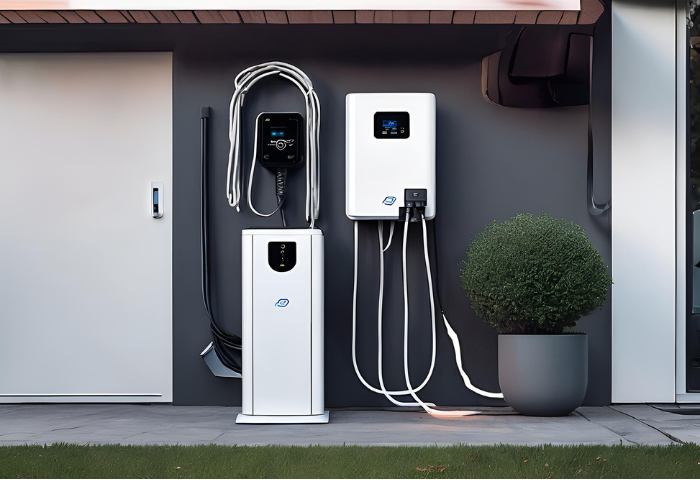
5.1 Charging Stations vs Charging Cable
Charging stations, also known as Electric Vehicle Supply Equipment (EVSE), are dedicated units that manage the flow of electricity from the grid to the vehicle’s battery.
Charging cables, on the other hand, are essential accessories that physically connect the charging station to the EV’s charging port.
5.2 Connector Types (J1772, CCS, CHAdeMO)
J1772: A standard connector used for Level 1 and Level 2 charging in North America, featuring a single-phase AC connection.
CCS (Combined Charging System): A high-speed DC charging connector that combines the J1772 connector with additional pins for DC charging, commonly used in North America and Europe.
CHAdeMO: Another DC fast charging connector, primarily used by Japanese and some European manufacturers, offering high-power charging capabilities.
5.3 Smart Charging Features
Smart charging stations incorporate advanced features such as connectivity, scheduling, and energy management to optimize charging efficiency.
Remote monitoring and control capabilities enable users to manage charging sessions, monitor energy consumption, and receive notifications via smartphone apps or web interfaces.
Load management functionality allows charging stations to adjust charging power based on grid conditions, energy prices, or user preferences, maximizing cost savings and grid stability.
5.4 Surge Protection
Surge protection devices (SPDs) safeguard EV charging equipment and electrical systems from voltage spikes and transient surges, ensuring reliable operation and extending equipment lifespan.
SPDs are typically installed at the main electrical panel or within EV charging equipment to suppress voltage fluctuations caused by lightning strikes, utility switching, or power surges.
5.5 Energy Management Systems
Energy management systems (EMS) optimize energy usage and distribution within the home, coordinating EV charging with other electrical loads to prevent overloads and minimize energy costs.
Smart charging stations may integrate with EMS platforms to prioritize charging during off-peak hours, leverage renewable energy sources, and balance energy demand within the household.
6. Installation Process
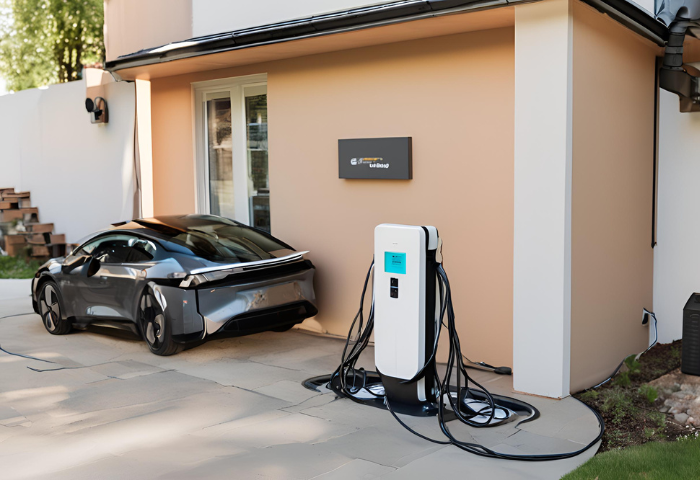
6.1 Site Assessment and Preparation
Evaluate potential locations for the EV charger, considering factors such as proximity to the electrical panel, parking space accessibility, and weather exposure.
Ensure adequate space for mounting the charger, cable management, and ventilation to dissipate heat generated during charging.
Clear the installation area of obstacles and debris to facilitate the installation process and ensure safety for both installers and users.
6.2 Power Supply Assessment
Determine the electrical capacity of the home’s power supply and assess the feasibility of accommodating the EV charger’s power requirements.
Consult with a licensed electrician to evaluate the electrical panel’s capacity, identify any necessary upgrades or modifications, and ensure compliance with local codes and regulations.
6.3 Installation Steps
Install the EV charger mounting bracket securely on the chosen location, following manufacturer guidelines and local building codes.
Connect the charger to the electrical panel using appropriately sized wiring, ensuring proper grounding and adherence to safety standards.
Mount the charging station onto the bracket and secure it in place, ensuring proper cable routing and strain relief to prevent damage.
Verify the integrity of all electrical connections and conduct a thorough inspection to ensure compliance with installation requirements.
6.4 Testing and Commissioning
Perform a series of tests to verify the functionality and safety of the EV charging system, including voltage checks, ground fault testing, and insulation resistance measurements.
Commission the charger by connecting it to an EV and initiating a charging session to ensure proper operation and communication between the charger and vehicle.
Document the installation process, test results, and any relevant information for future reference and maintenance purposes.
6.5 Troubleshooting Common Issues
In case of installation or operational issues, refer to the manufacturer’s installation manual and troubleshooting guide for guidance.
Common issues may include faulty connections, inadequate power supply, compatibility issues with the EV, or communication errors between the charger and vehicle.
Consult with a qualified electrician or the charger manufacturer’s technical support team to diagnose and resolve any issues encountered during installation or operation.
7. Maintenance and Upkeep
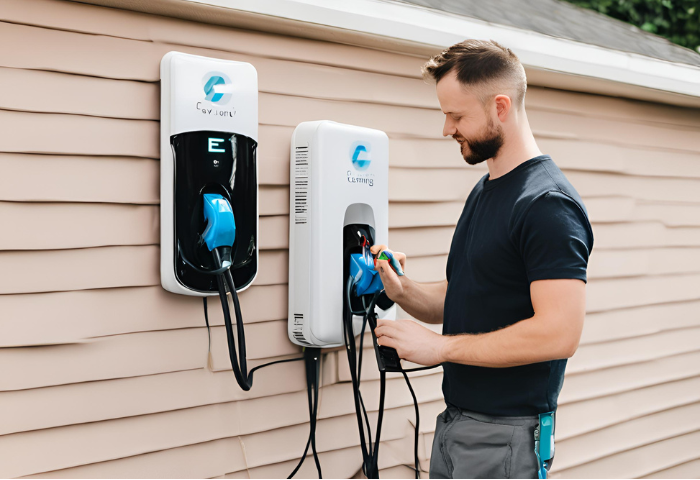
7.1 Cleaning and Inspection
Regularly inspect the EV charger for signs of damage, wear, or corrosion, paying close attention to electrical connections, cables, and enclosures.
Clean the charger and surrounding area to remove dust, debris, and other contaminants that could affect performance or safety.
Check for any obstructions that may impede airflow or access to the charger, ensuring proper ventilation and accessibility.
7.2 Firmware Updates
Stay informed about firmware updates released by the charger manufacturer to address performance improvements, security enhancements, or compatibility issues.
Follow manufacturer instructions for updating the charger firmware, ensuring compatibility with the EV and maintaining optimal functionality.
7.3 Repairs and Replacements
Promptly address any issues or malfunctions detected during routine inspections or operation, seeking assistance from qualified professionals or the manufacturer’s technical support team if necessary.
Follow recommended procedures for troubleshooting and diagnosing common problems, such as faulty connections, communication errors, or component failures.
Replace worn or damaged components, including cables, connectors, or internal circuitry, to prevent safety hazards and ensure reliable charging performance.
7.4 Maximizing Charger Lifespan
Avoid overloading the charger beyond its rated capacity, adhering to manufacturer specifications and safety guidelines.
Minimize exposure to extreme temperatures, moisture, or environmental contaminants that could accelerate component degradation or corrosion.
Implement preventive maintenance measures, such as periodic inspections, cleaning, and firmware updates, to identify and address potential issues before they escalate.
7.5 Warranty Considerations
Review the warranty terms and conditions provided by the charger manufacturer to understand coverage limitations, exclusions, and duration.
Adhere to recommended maintenance procedures and installation requirements specified in the warranty documentation to maintain eligibility for warranty claims.
Keep records of maintenance activities, repairs, and any correspondence with the manufacturer or service providers for warranty validation and documentation purposes.
8. Integration with Renewable Energy
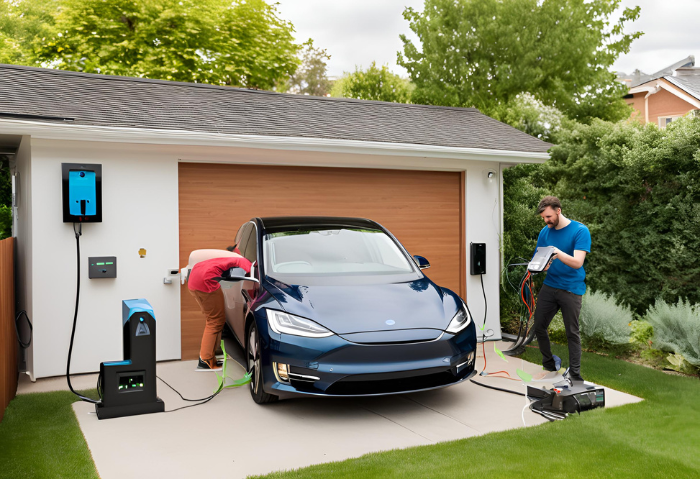
8.1 Solar Panel Integration
Install solar panels on the roof or property to harness sunlight and convert it into electricity using photovoltaic (PV) technology.
Size the solar array appropriately to meet both household electricity needs and EV charging requirements, considering factors such as available roof space, orientation, shading, and local solar irradiance.
8.2 Battery Storage Solutions
Implement battery storage solutions, such as lithium-ion batteries, to store excess solar energy generated during the day for use during periods of low sunlight or high energy demand.
Size the battery system based on anticipated energy consumption, charging patterns, and desired autonomy to maximize self-consumption of solar energy and optimize energy independence.
8.3 Energy Management Systems
Deploy energy management systems (EMS) to optimize the utilization of solar energy for both household consumption and EV charging.
Utilize smart charging features to schedule EV charging sessions during periods of ample solar generation, minimizing reliance on grid electricity and reducing charging costs.
8.4 Off-Grid Charging
For off-grid properties or locations with limited access to utility electricity, design an off-grid charging system powered entirely by solar energy and battery storage.
Size the solar array and battery bank to meet both household and EV charging needs year-round, considering seasonal variations in solar irradiance and energy demand.
8.5 Grid-Tied Systems
Connect the solar PV system to the utility grid through a grid-tied inverter to enable net metering or feed-in tariff arrangements, allowing excess solar energy to be exported to the grid for credit.
Utilize grid-tied charging solutions to supplement solar energy with grid electricity during periods of low solar generation or high energy demand, ensuring reliable EV charging year-round.
9. Charging Networks and Services
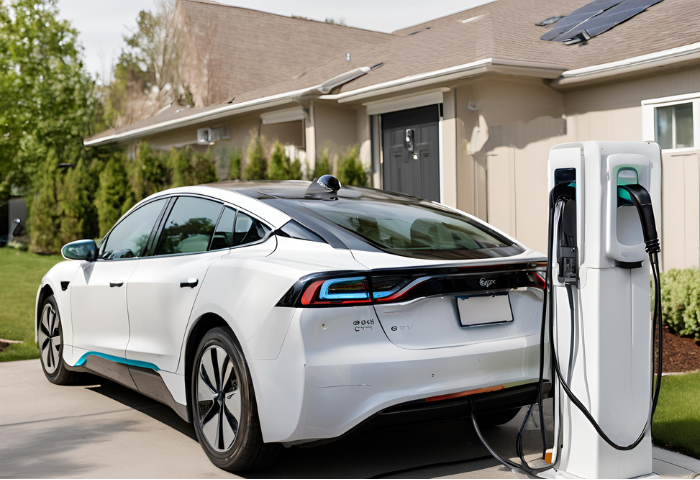
9.1 Public Charging vs Home Charging
Public charging stations are located in various public locations such as shopping centers, parking lots, and along highways, offering convenience for EV drivers on the go.
Home charging, on the other hand, involves installing a charging station at a residential property, providing a convenient and cost-effective option for overnight charging and daily use.
9.2 Subscription-Based Charging Services
Some charging networks offer subscription-based services, providing EV drivers with access to a network of charging stations for a monthly or annual fee.
Subscription plans may offer benefits such as discounted charging rates, priority access to chargers, and additional features such as smartphone apps for remote monitoring and payment.
9.3 Payment Options
Public charging stations typically offer multiple payment options, including credit/debit cards, mobile apps, RFID cards, and contactless payment methods.
Pay-per-use models allow EV drivers to pay for charging sessions on a per-kilowatt-hour (kWh) or per-minute basis, depending on the charging network’s pricing structure.
9.4 Roaming Agreements
Roaming agreements between charging networks enable EV drivers to access charging stations operated by different providers using a single account or payment method.
Roaming agreements enhance charging accessibility and convenience, allowing seamless travel across different regions without the need for multiple accounts or payment methods.
9.5 Charging Infrastructure Expansion
The expansion of charging infrastructure is critical for supporting the growing number of EVs on the road and reducing range anxiety among drivers.
Governments, utilities, and private companies are investing in the deployment of charging stations, including Level 2 chargers and DC fast chargers, in urban areas, along highways, and at key destinations.
Initiatives such as public-private partnerships, incentives for charging infrastructure deployment, and regulatory mandates for new construction projects to include EV charging provisions are driving the expansion of charging networks worldwide.
10. Future Trends in EV Charging
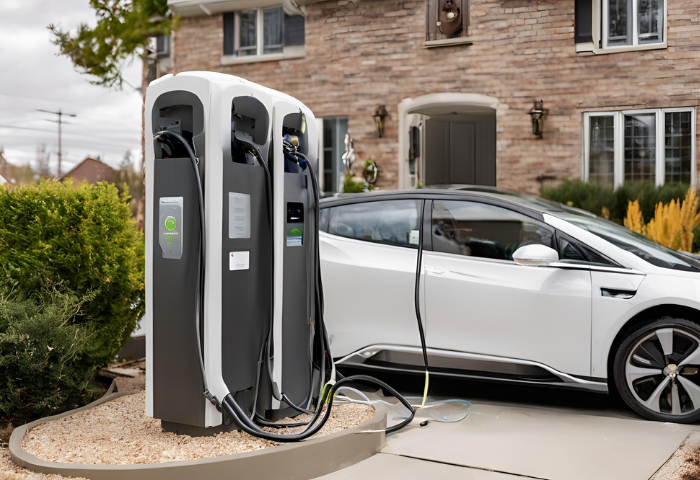
10.1 Wireless Charging Technology
Wireless charging technology eliminates the need for physical cables, enabling EVs to charge simply by parking over designated charging pads embedded in the ground.
This technology promises greater convenience, reduced wear on charging connectors, and seamless integration into urban environments and automated parking systems.
10.2 Vehicle-to-Grid Integration
Vehicle-to-Grid (V2G) integration enables bidirectional power flow between EVs and the grid, allowing EV batteries to serve as energy storage devices and provide grid stabilization services.
V2G technology holds the potential to facilitate demand response, optimize renewable energy integration, and reduce electricity costs for EV owners.
10.3 Ultra-Fast Charging Stations
Ultra-fast charging stations, capable of delivering charging speeds of several hundred kilowatts, are being developed to significantly reduce charging times and enhance EV usability for long-distance travel.
These high-power chargers utilize liquid-cooled cables, advanced power electronics, and grid-friendly charging protocols to minimize grid impact and maximize charging efficiency.
10.4 Impact of Electric Vehicle Adoption
The widespread adoption of electric vehicles is poised to revolutionize transportation, reducing greenhouse gas emissions, improving air quality, and enhancing energy security.
Electric vehicles offer economic benefits, including reduced fuel and maintenance costs, as well as new opportunities for innovation and job creation in the automotive and energy sectors.
10.5 Policy and Legislative Developments in EV Charging
Governments worldwide are implementing policies and legislative measures to accelerate EV adoption and expand charging infrastructure.
Initiatives include financial incentives for EV purchases, grants and subsidies for charging infrastructure deployment, and mandates for public and private entities to invest in EV charging facilities.
By following these steps and prioritizing safety with a professional installation, you’ll be well on your way to a seamless and convenient home EV charging experience. Imagine waking up to a fully charged car every morning, ready to conquer your day – all powered by clean electricity! So, start planning, find a reputable electrician, and embrace the future of electric transportation at home!

Henry Michael is a leading expert in EV charging station research, specializing in innovative solutions for electric vehicle infrastructure. With a passion for sustainability and technological advancement, he is dedicated to advancing the accessibility and efficiency of EV charging worldwide.


